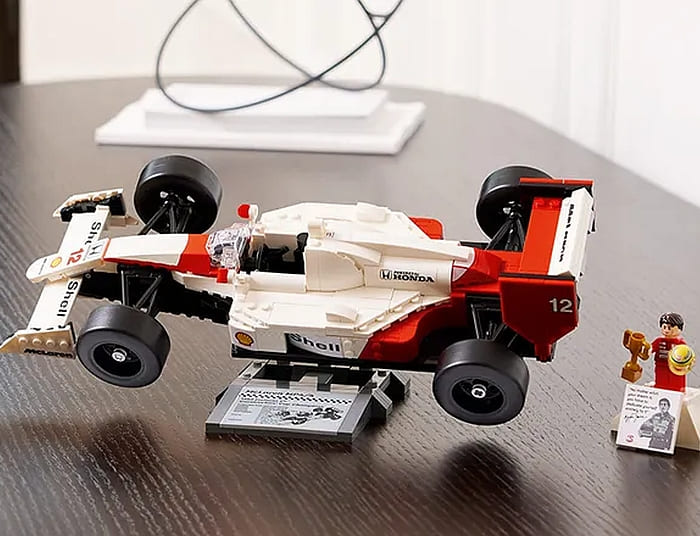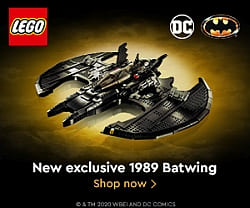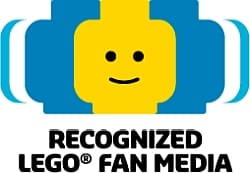A couple of days ago, the BrickLink team revealed the five finalists of Series 8th of the BrickLink Designer Program out of almost 400 submissions. These fan-created LEGO models will now go on the crowdfunding stage, which means that the BrickLink team will work with the original creators to prepare their models for production. They will be available for pre-order starting on June 1st, 2026. As usual, all designs that receive over 3,000 pre-orders will be produced, and up to 30,000 of each set will be manufactured during a limited, one-time production run. Below is a list of the five finalists. (Please note that some of the details, like exact part counts, might slightly change before production.)
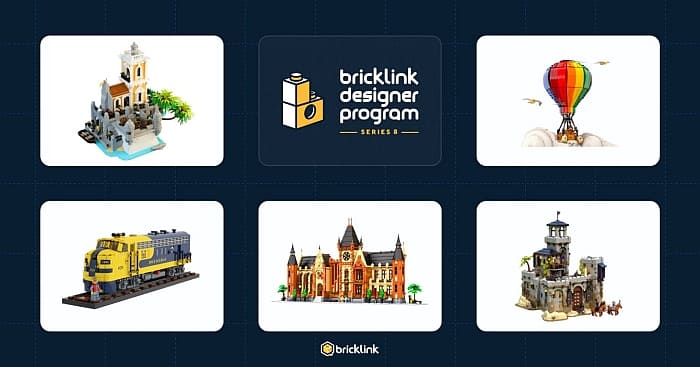
The Brick Railroad Locomotive by ThomasRoeder is an impressive model train based on real locomotives from the 1950s to the 1970s. The designer made sure that the locomotive can be retrofitted with motors and can handle modern LEGO train track curves without any problems. The color combination was specifically chosen so that the shapes and curves can be built from standard LEGO elements without relying on lots of stickers. The model comes with 1,428 parts, 4 stickers, and 1 minifig.
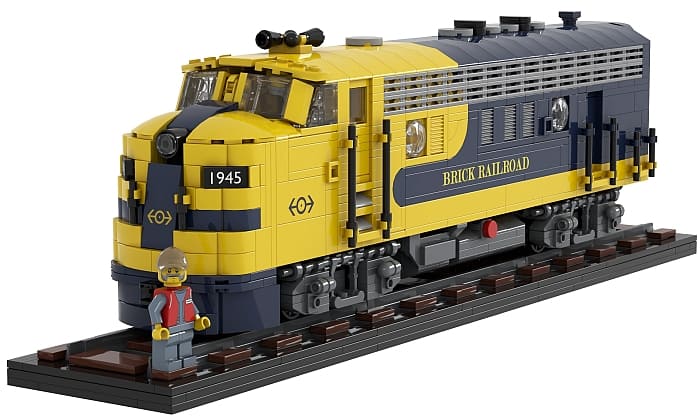
With its strong walls and strategic defenses, Coconut Cape by BallisticBricks serves as a guardian of the ocean, deterring pirates and ensuring the safety of the surrounding trade routes. It stands as a beacon for ships and a refuge for the weary. And buried deep within the walls, a secret compartment reveals precious gold and gems for the plundering! This model previously appeared but was not chosen in Series 5, and has been upgraded with structural improvements and other updates. It features a dock where ships can safely anchor and unload their cargo, a well-stocked armory filled with weapons and equipment, walls with strategic turrets and cannons, a prison cell to lock away pirates, living quarters including a kitchen, a hidden treasure room, and more! The model comes with 2,425 parts, 8 minifigures, and a shark.
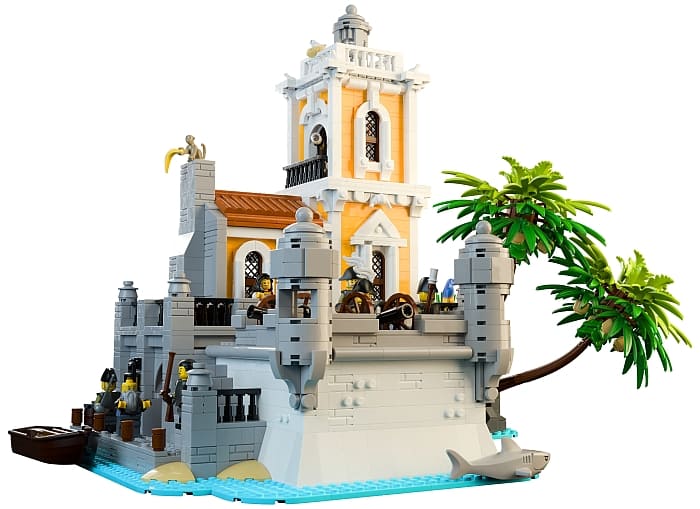
Dustmark Keep by brickhucker is another model that appeared but was not chosen in a previous series. Nestled deep in the uncharted Outland, far beyond the reach of civilization and the strife of warring factions, this sand-swept fortress thrives in isolation. Its remote and desolate surroundings offer unparalleled safety and secrecy, making it an ideal haven for elite warriors, assassins, saboteurs, and smugglers, bound by a code of professionalism that ensures discretion and ruthlessness in equal measure. Amidst the unrelenting dunes, Dustmark Keep rises like a defiant monument, offering refuge and strength to its hardened members. The model has multiple open and closed display options and comes with 4,000 parts, 9 stickers, 11 minifigures, and 2 horses.
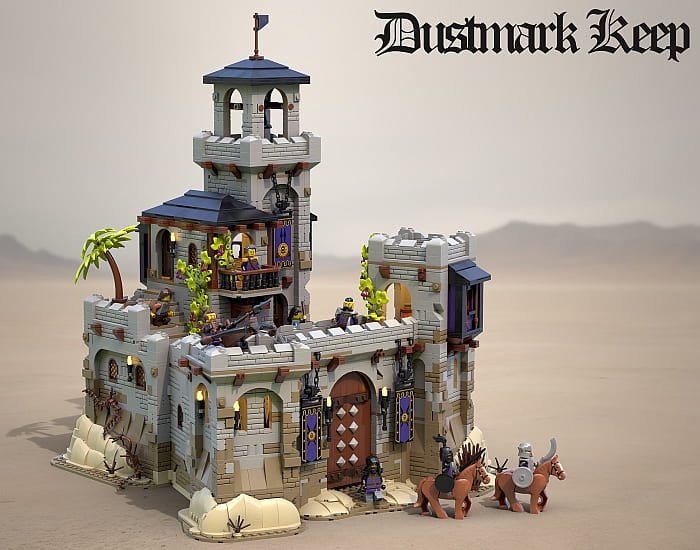
The University of Science by KingCreations is yet another revised model, taking advantage of the updated maximum allowed size in the BrickLink Designer Program. The designer was inspired by various castles, academies, and other pieces of architecture for the exterior of the university, with varying yet cohesive styles and sections to form a unique look and a more interesting building experience. The fully open form better captures the scale of real universities and is over a meter wide! It also allows the build to fit onto a wider variety of shelving. In closed form, there is no open back to the model, which allows it to be easily placed next to other buildings in a city layout and gives a less wide display option. The interior references many different areas of science that a real-life university might offer, such as astronomy, anatomy, geology, archeology, botany, and chemistry, as well as a library, classrooms, and a grand entrance. The model comes with 3,995 parts, 7 stickers, and 13 minifigs.

The Hot Air Balloon by ExeSandbox offers a more accurately sized hot air balloon than those available in past and currently available LEGO sets, utilizing the standard curved panels. The balloon is brick-built with a gradient color scheme, and the basket is pretty standard and comparable with other LEGO hot air balloons. To complement the aircraft and to balance out the top-heavy balloon, a cloud base is included as well as a pair of seagulls to endlessly annoy the pilot minifig and his dog. This model comes with 876 parts, 1 minifig, and 1 dog.
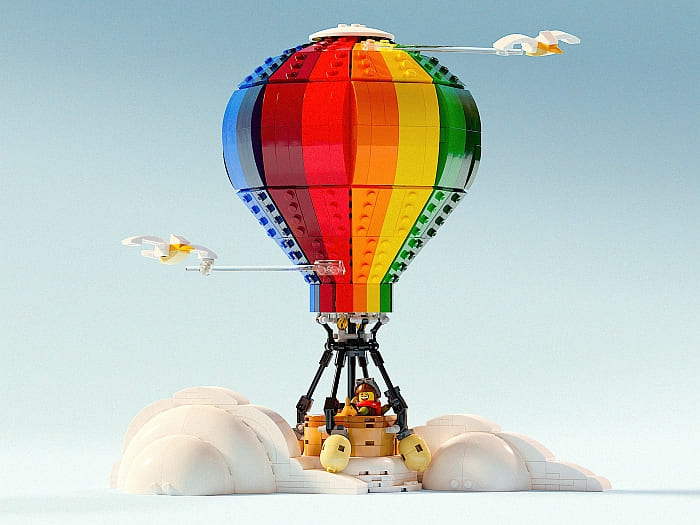
Again, these models will be available next year, so keep an eye on further announcements at that time. In the meantime, you can take a look at Series 5, which is currently still open for crowdfunding. LEGO significantly increased the maximum for each model, so they are still all available for pre-purchase. You can get them here: BrickLink Designer Program Series 5.

What do you think? How do you like the Series 8 finalists? Would you like to add any of them to your collection? Feel free to share your thoughts and discuss in the comment section below!
And you might also like to check out the following related posts:
- BrickLink Designer Program Series 5 Pre-Order
- Brick Breakdown: LEGO BrickLink Set – 1950s Diner
- Brick Breakdown: LEGO BrickLink Set – Modular LEGO Store
- Brick Breakdown: LEGO BrickLink Set – Aquarium
- Brick Breakdown: LEGO BrickLink Set – Fishing Boat
- Brick Breakdown: LEGO BrickLink Set – Castle in the Forest
- Brick Breakdown: LEGO BrickLink Set – Sheriff’s Safe


